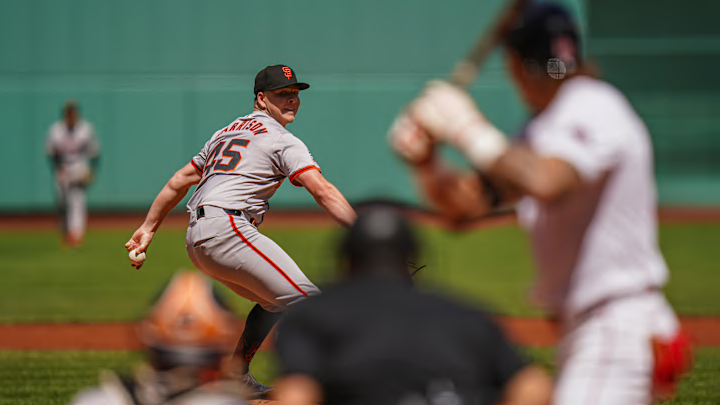The Boston Red Sox have been looking to make sense of the Rafael Devers trade. So far, two of their acquisitions in the deal haven't worked out. James Tibbs III was the "headliner" of the package sent to Boston, but he was traded to the Dodgers for Dustin May.
Jordan Hicks hasn't panned out so far and is owed a hefty salary. Jose Bello isn't even on the team's Top 30 prospect list. But the lights are shining on Kyle Harrison, someone who has struggled to fit in the Giants' system since he was called up in 2023.
During his time in the majors, he relied on three pitches: his four-seamer (which is his best pitch), his slurve, and his changeup. He had originally ranged between them and a slider as well. However, his offspeed pitches have been getting obliterated by major league hitters since his call-up. He can't just rely on his fastballs the entire game.
The Red Sox knew this and planned accordingly. Much to the dismay of fans, he was immediately sent to AAA Worcester to work out his pitches and develop them down there. They gave Harrison a new grip on his changeup, and the WooSox staff has also worked with him to add a cutter to his arsenal. So far, it's worked handsomely for Harrison, especially within his last two starts.
In those two starts, he's struck out 15 batters and has zero earned runs in 10 full innings. His new cutter has been showing out, with a 38% CSW rate (and 80% whiff rate specifically). For those who don't know what "CSW" is, it's called the "Called Strike Plus Whiff" rate metric. This measures the pitcher's ability to throw strikes, whether a called or a swinging strike, and 38% is very good (27% is average).
Now, the question on most people's minds will be whether Harrison can be called up before September. There's a good chance he will be, so if he does, he'll fit in nicely at the bottom of their rotation...for now at least. If he shows out in the bigs, the Red Sox may have just made the Devers trade a whole lot easier for them to recover from.
